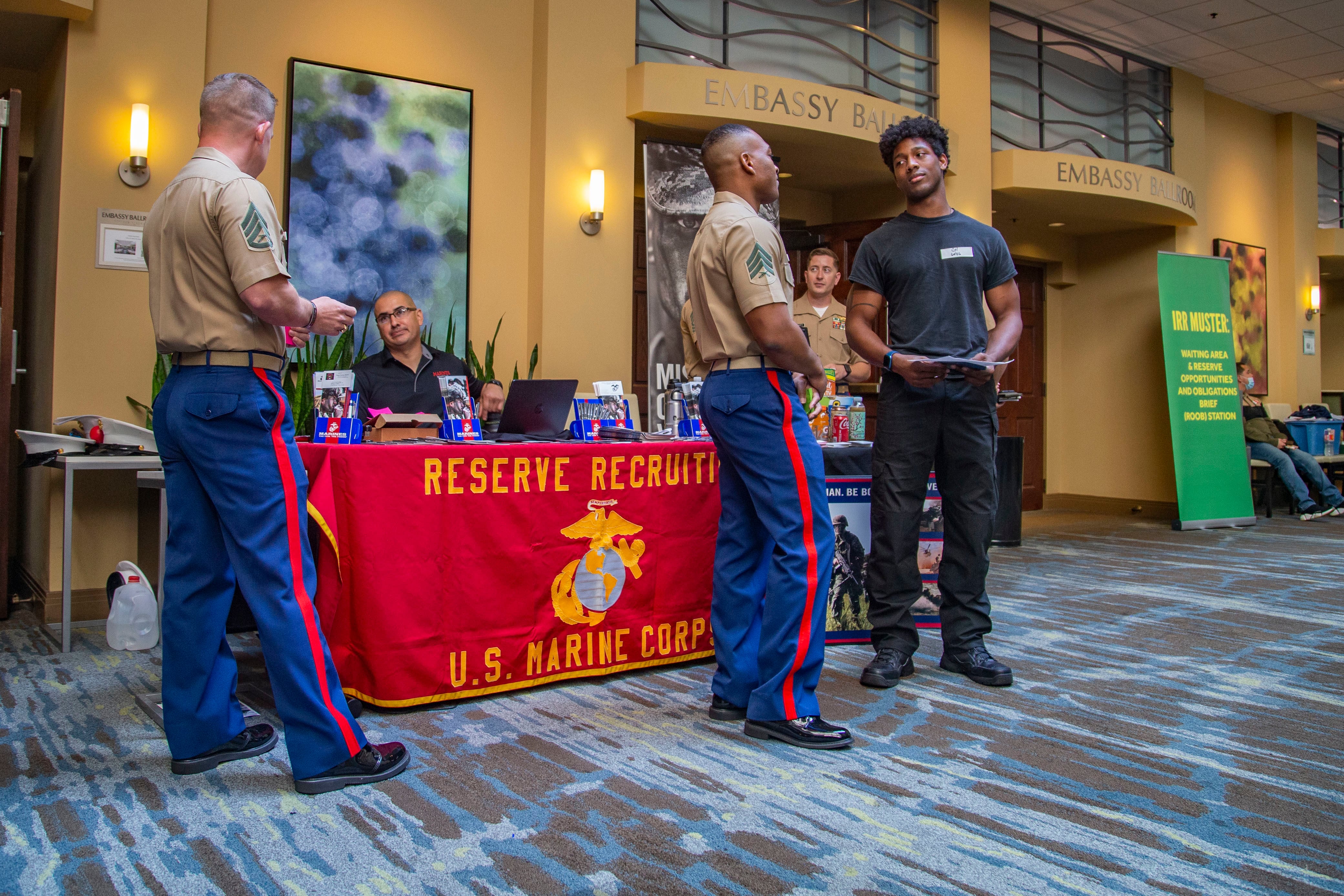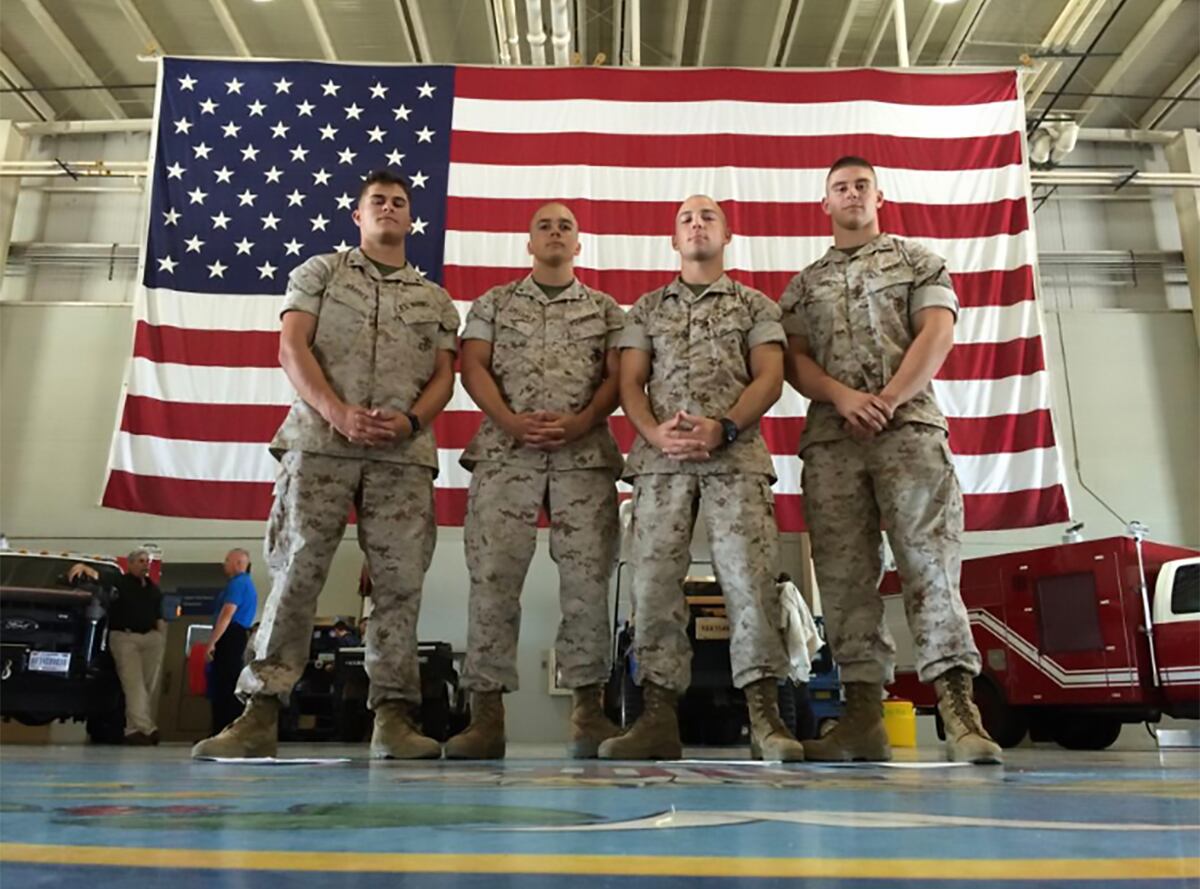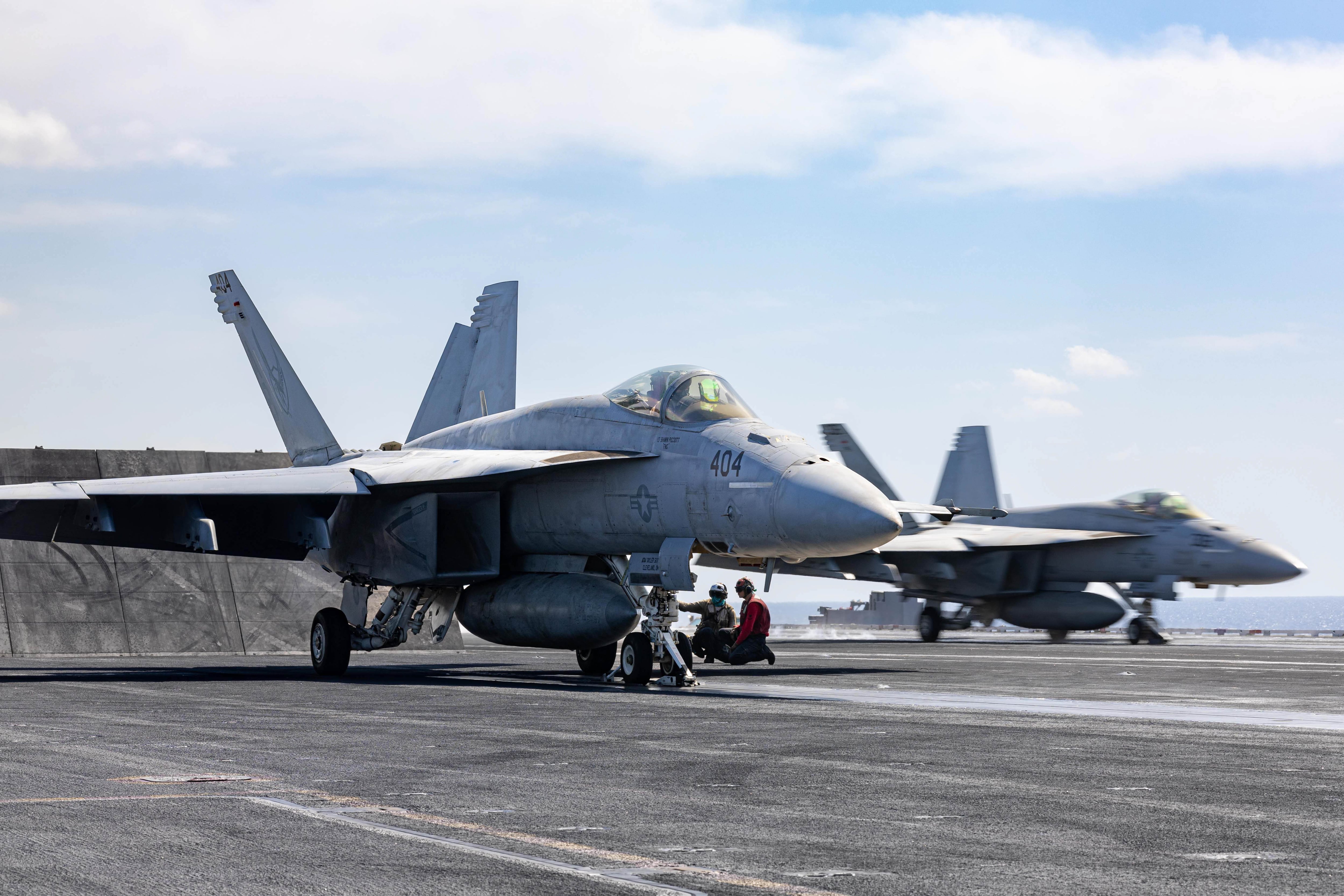For years, the Marine Corps has struggled to shift highly qualified and talented Devil Dogs from the active to its Reserve side.
Most Marines, nearly three-quarters, do a single enlistment and get out entirely.
While it’s known in reserve and retention circles, an Army National Guard program specifically targets Marines for enlistment when they leave the Corps.
RELATED

Out of an estimated 336,000 Army National Guardsmen, nearly 4,400 currently serving are prior service Marines, Wayne Hall, Guard spokesman, told Marine Corps Times.
That number might seem small in the big picture, but the Corps has to recruit about 30,000 new Marines every year to keep its lower ranks full. And those lower ranks feed the more senior force in a talent funnel that’s rigorous and competitive.
The Guard welcomed Marine veterans for decades, but it was in 2018 when they established a pilot program that later became Marine to Guard, or M2G, Hall said.
The Guard has grabbed this number of Marines each of the listed fiscal years:
- 2019 – 155
- 2020 – 306
- 2021 – 435
- 2022 – 100*
*From October to March 25
Source: Army National Guard
By its sheer size, the Guard offers more training locations and job specialties. Marine Corps Times reported in 2021 on efforts by the Marine Corps Reserve to claw back some of those qualified Marines donning Army green.
But the Marines’ new talent management and goals to “mature the force” have top Leathernecks looking at more options for Marines to stay in uniform, active or reserve.
There are some stipulations. The Marine must be at tier 1 or tier 2 Marine, a viable candidate for re-enlistment. And they need to submit their reserve affiliation choices as early as 120 days from their End of Active Service and no later than 30 days before EAS, if it’s a Reserve-only affiliation.
That smooths the bureaucratic transition for planners and keeps the Marine in the necessary pipeline.
One such program that Marine Corps Times previously reported on is to tap into its Individual Ready Reserve. That’s the status all active enlisted service members reach as a holding pattern between active service and full discharge.

Another is the Direct Affiliation Program, or DAP. The DAP allows well-qualified Marines still on active service to match up with the right location, job and opportunity on the reserve side before they get out, said Col. Jason Burkett, assistant chief of staff, G-1, Marine Forces Reserve.
Sgt. Caleb Hall did his time on active duty, serving in intelligence and completing a tour in Iraq. When he got home his next set of orders, if he stayed in, were to Okinawa.
That wasn’t going to work for his wife and kids.
“I was one of those nerds who went into work and read the (Marine Administrative messages) every morning,” Hall said. “I had seen some things about the reserves and the Direct Affiliation Program and it kind of caught my interest and that led me to contact a career recruiter and get a little bit more of an explanation of what that program really entailed.”
Hall’s a good example of what reserve leaders are looking for. He was in a valuable MOS, had deployed, was qualified and ready to keep serving.
But life can require hitting the pause button.
Maj. Ryan Shrout has a similar story. Still on active duty when interviewed recently by Marine Corps Times, Shrout was in the process of finalizing his DAP move.
After a dozen years in active service as a Marine lawyer, Shrout said it would be “borderline criminal” for him to get out after the service he’d had and having built so much time toward a military retirement.
“I was not ready to walk away from the Marine Corps yet,” Shrout said.
A 2019 Center for Naval Analyses titled “The Evolution of the Direct Affiliation Program” looked at data from 2002 to 2018, especially after fiscal year 2017, when the Marine Corps Recruiting Command took over the program.
The report showed that linking a Marine with the Selected Marine Corps Reserve through an initiative like DAP made for the highest retention rates.
If Marine career planners wait too long, and the Marine hits the IRR or gets out completely, then it’s that much harder to bring them back in.
“I think there are professional and personal benefits,” Shrout said. “On the professional side, it gets you attached to a unit. So, you’re not really hanging out in limbo, not sure where to go, who to call, what to do.”
The program attempts to give Marines who want to stay Marine in uniform the chance to do so.
“I wish DAP was a requirement,” Hall said. The sergeant pointed out that without an IRR extension or reserve enlistment it’s nearly impossible to get back into the Corps.
“Once you close that door, it could close for life,” he said. “Keep that door open if needed, wanted in the future.”
CORRECTION: This article has been updated to correctly reflect a quote from Col. Jason Burkett and remove an incorrect job reference involving Maj. Ryan Shrout.
Todd South has written about crime, courts, government and the military for multiple publications since 2004 and was named a 2014 Pulitzer finalist for a co-written project on witness intimidation. Todd is a Marine veteran of the Iraq War.









